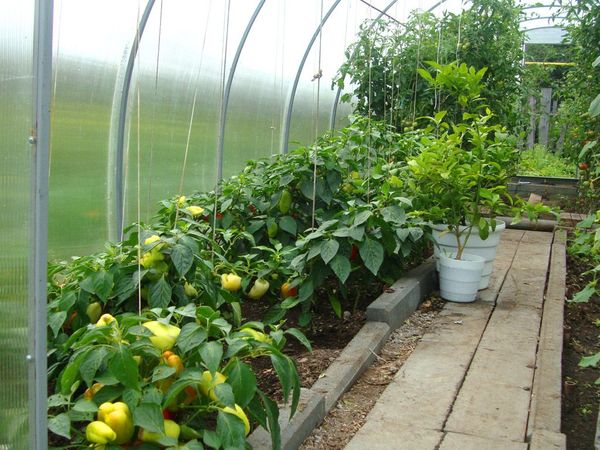Bulgarian pepper is a very tasty vegetable with a universal purpose. It is used fresh for making salads, it is also pickled, fried, stuffed, baked and consumed in other various variations. Regions with a mild climate are suitable for growing and planting such crops in the open field; in other localities, such a vegetable can be obtained using a greenhouse made of polycarbonate.
In such a greenhouse you can plant a sweet and bitter variety even in early spring. It is much easier to care for and carry out training, even in the climate of Siberia, the Urals and the Moscow region.
Table of contents
- The advantages of growing peppers in a polycarbonate greenhouse
- The correct timing of planting pepper in a greenhouse
- How to prepare a greenhouse and how to feed in the soil
- The distance when planting pepper seedlings
- Proper formation of the bush
- Watering rules
- Good approach to caring for plants
- Gardener's mistakes when growing
- Diseases and pests
- Preparation and harvesting
The advantages of growing peppers in a polycarbonate greenhouse
Bulgarian pepper considered a capricious culturewhich grows only at a certain temperature, light, humidity, etc. It is almost impossible to create the necessary conditions in open ground, because there will always be a risk of adverse weather conditions.
In order to get a guaranteed yield, you should build a polycarbonate greenhouse, which also has the following advantages:
- early landing opportunity seedlings, which will lead to the most rapid formation of ovaries;
- Bulgarian pepper reacts particularly sensitively to temperature changes, while in the greenhouse you can maintain a favorable microclimate;
- under cover, plantings will be protected from cold winds, excessive precipitation and unwanted dew.This factor makes plants the most immune to diseases;
- indoors Pepper care is minimized.
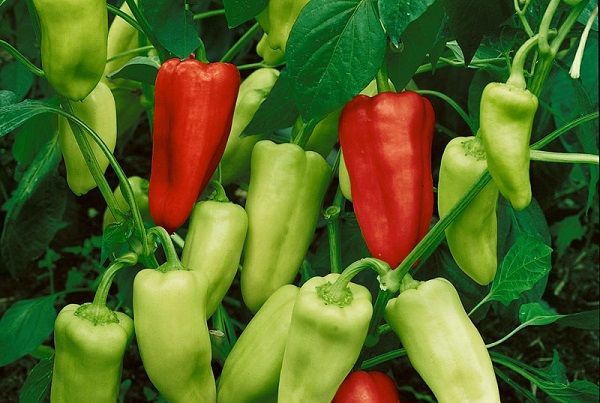
In the greenhouse, the Bulgarian will be protected from all natural disasters, so the quality and quantity of the harvest will depend only on effort, competent approach and skills of the gardener. It is necessary to pick flowers in a timely manner, transplant seedlings within a certain time frame, and also to form a shrub if any tall variety is selected.
The correct timing of planting pepper in a greenhouse
On average, seedlings need to be planted in a greenhouse in mid-May, but more specific time can be determined by the following indicators:
- On seedlings, whose age is 60-70 days, should be not less than 10 leaves;
- A very important indicator will be the air temperature in the greenhouse, landing work can only be done if it stops falling below 10-12 degrees;
- In the southern and central regions, the greenhouse is warming up by the end of April-mid May. While in more northern areas such indicators appear only by the beginning of summer.
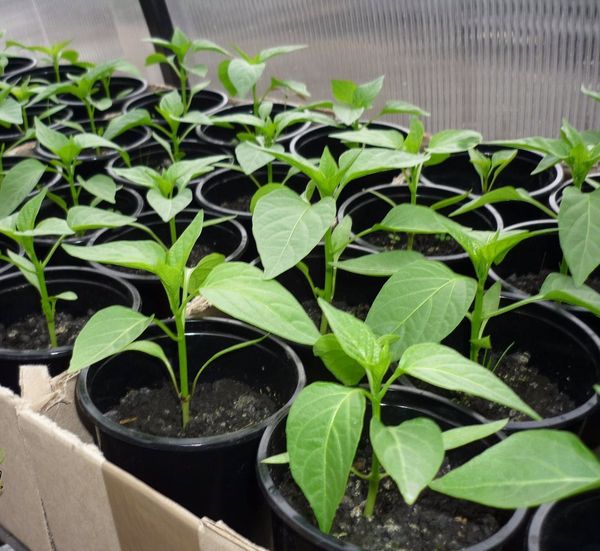
In order to speed up the process of warming the greenhouse should be in advance cook warm beds. In the fall, the soil is dug to a depth of 30 centimeters, and small branches, straw, leaves, humus and other plant material are placed on the bottom, after which it is buried with soil and watered. As soon as the snow falls, it is scattered on the soil in the greenhouse.
How to prepare a greenhouse and how to feed in the soil
Before planting pepper seedlings in a greenhouse, it is necessary to prepare the soil, because the quality of the future crop will depend on the degree of its fertility.
In the fall, the soil is digged, cleaned of weeds, stones and other debris. Also at this time make organic fertilizer in the form of compost or rotted manure. For one square meter of soil used 1-2 buckets of fertilizer.
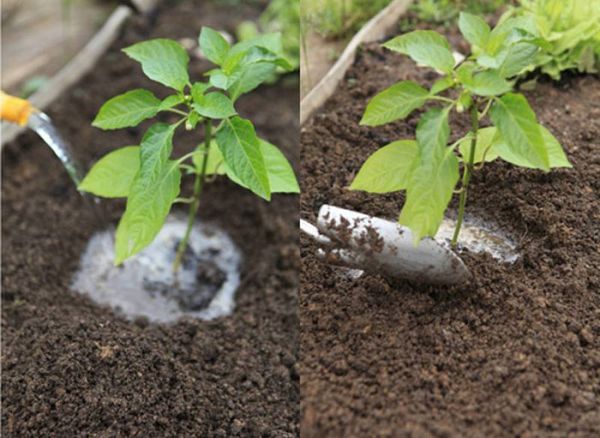
The distance when planting pepper seedlings
Seedlings of Bulgarian pepper are placed in the greenhouse, focusing on the area of the room, variety and method of cultivation. For the most efficient use of the territory, it is recommended to choose tall varieties. The rules of plant location are as follows:
- the distance between the rows should be not less than 70-80 centimetersOtherwise, caring for plants will be a little more difficult;
- tall varieties grown in 2 or 3 trunks, located at a distance of 40 centimeters from each other;
- Stunted peppers are grown in 2 trunks, the distance between them is 25-30 centimeters.
Bell Peppers Are Planted on a cloudy day or in the evening. Seedlings thoroughly watered with water and taken out of the pots so as not to damage the root system and the earth bed. Deepen the seedlings just as they grew in seedlings.
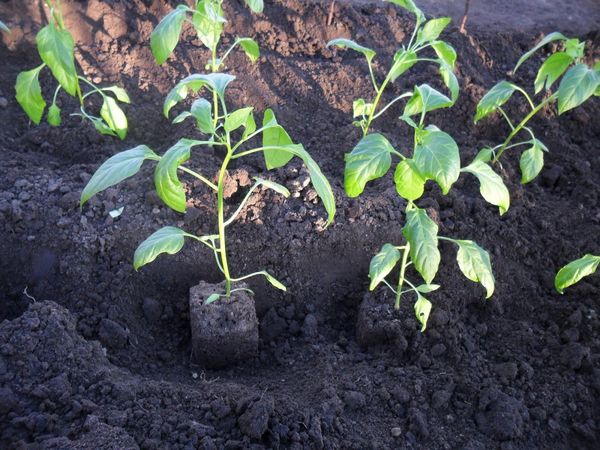
Proper formation of the bush
In order to get a large number of large and tasty fruits, you must follow some rules:
- Formation of plants begin only after it reaches a height. 25 centimeters. Young peppers may stop developing or die;
- The first flower bud, which is otherwise called the crown, is removed immediately after the appearance. In this case, the plant will begin to more actively grow new shoots;
- Pepper is usually formed into several shoots. For this, the strongest shoots from the first fork are left, the remaining ones are pinned to the growth point and the top is cut off. Thus, a plant skeleton is created;
- Skeletal branches also begin to form a fork, in the center of which a bud appears. Actions are carried out similarly to the previous ones: the strongest shoot is left, and the rest are pinned over the flower bud;
- All further branches are formed in the same way;
- Shoots and buds growing inside the bush are removed because they cause thickening of the landings and will not yield a good harvest.
Each bush is left no more than 20-25 fruits, the rest are removed. It is also necessary to cut off diseased, damaged shoots and leaves growing below the skeleton.
Full formation of the bush is necessary only for tall varieties. On undersized plants, only improperly growing, diseased and infertile parts are removed.
With a lack of lighting, the buds of plants may begin to fall off. In order to prevent such a problem, perform the following actions:
- after the peppers are fully ripe, the leaves should be removed, located on the main stem;
- after harvesting, all foliage growing below the second branch is removed.
Watering rules
Watering is a very important procedure for peppers, so it is carried out taking into account the following nuances:
- all work is carried out in the morning hoursso that in the evening excessive moisture has time to evaporate;
- 15 liters of water are used per 1 square meter of soil;
- Before the formation of buds, the plants are watered 1 time in 7-10 days, in hot weather additional moisture is allowed;
- during flowering and fruiting planting watered 1 time in 4-5 days, in hot weather 1 time in 2-3 days;
- for watering use only exclusively warm and clear waterto avoid overcooling and infection of plants.
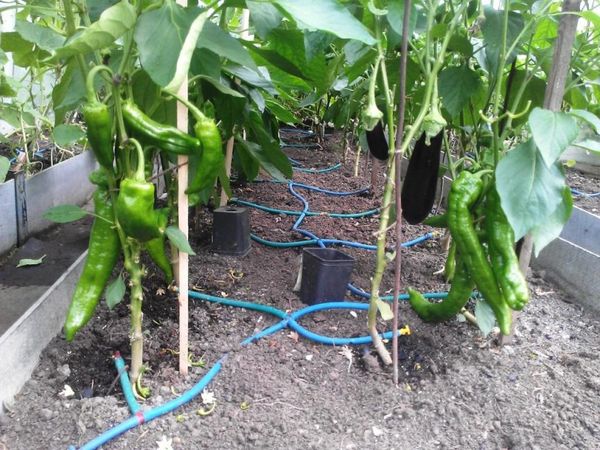
Peppers are watered only under the root, using a watering can, a hose, or a drip irrigation system.
Good approach to caring for plants
Plant nutrition with nutrients is very important for the formation of large and beautiful fruits:
- during the growing season the plants are fed every 14 days nitrogenous fertilizers, such as urea;
- during the formation of the fruits 1 time in 2 weeks contribute phosphoric fertilizers;
- 2-3 times per season allowed plant nutrition mullein.
In addition to feeding and watering, pepper needs to be carried out the following work:
- weeds pick up healthy trace elements from the soil and shade the peppers, so they should be regularly removed;
- after watering, the soil is loosened in order to improve its oxygen saturation;
- tall varieties need support, so they are tied to a support or trellis.
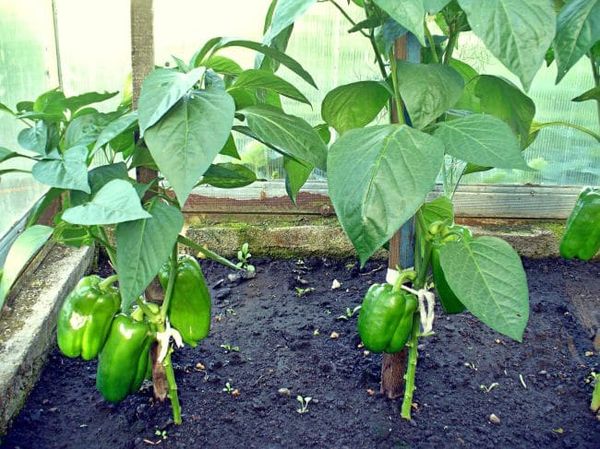
Gardener's mistakes when growing
- One of the main mistakes gardeners will be failure to comply with the planting scheme plants, because of which they do not receive the proper amount of sunlight and do not tie fruit;
- Pepper is the same afraid of cold and heatIf the first problem can be solved with the help of a greenhouse shelter, then the second one will be a little more difficult. After the temperature in the greenhouse warms up by more than 35 degrees, polycarbonate is covered with another translucent material;
- Peppers worth watering often and slowly, because with a shortage or an excess of moisture very often fall off the ovaries of plants;
- Too deep loosening can cause damage to the root system, which in turn leads to the death of the flowers and the death of the plant;
- If the pepper has stopped developing, then most likely a mistake was made before planting it. Planting seedlings in the ground can not bury the root neck of the plant.
The lack of nutrients in the soil can also lead to various problems:
- leaves twisted around the edges indicate a lack of potassium;
- if the lower side of the leaf becomes purple, then the pepper lacks phosphorus;
- grayish leaves indicate too little nitrogen;
- the absence of ovaries and the rapid growth of green indicates a surplus of nitrogen, in which case irrigation should be carried out with ash.
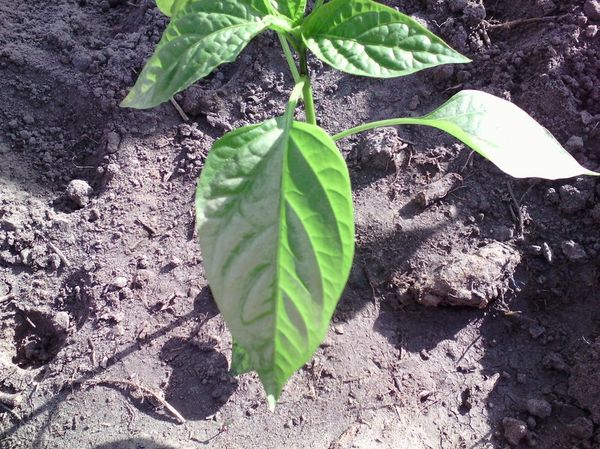
Diseases and pests
Peppers, like many other plants, are prone to the appearance of diseases and pests. When growing crops in a greenhouse, the following ailments are most often encountered:
- black spot;
- bacterial cancer;
- powdery mildew;
- mosaic;
- late blight;
- gray rot, etc.
Of the insects most often appear:
- scoops;
- spider mite;
- larvae of the May beetle;
- Colorado beetle;
- aphid;
- thrips.
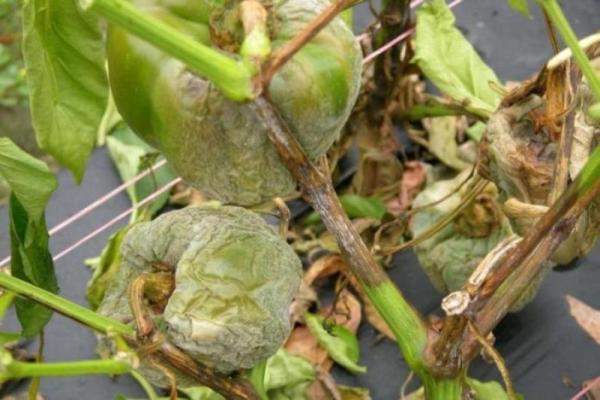
For pest control, they are treated with karbofos or other insecticides, which can be purchased in specialized stores. When diseases appear, in many cases the treatment is useless, the affected plants are removed, they cannot be transplanted, and healthy ones are treated with fungicides.
Preparation and harvesting
Harvest sweet bell pepper growing in a greenhouse can until the onset of cold weather. The first frost will not be afraid of such plants.
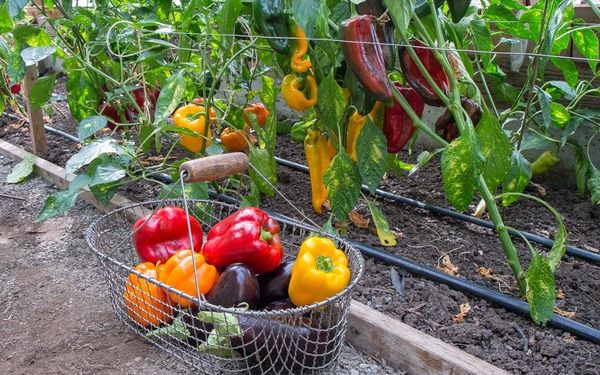
Works are carried out adhering to some rules:
- In order to increase the amount of harvest peppers are harvested at the stage of technical (incomplete) maturity. 1 time in 5-7 days;
- Fruits collected at the stage of biological (full) maturity are the most tasty and useful, but their shelf life will be much less than that of peppers collected during technical maturity;
- The transition from technical maturity to biological lasts from 3 to 20 days. The main factor influencing this process will be the air temperature, the higher it is, the faster the ripening takes place;
- Fruits are separated from the plant along with the stem, using scissors, a knife or pruner.
To grow bell pepper in the greenhouse is available to all gardeners, regardless of their location.Thanks to this design, a harvest of healthy and tasty fruits can be obtained not only in the south, but also in more northern regions.
